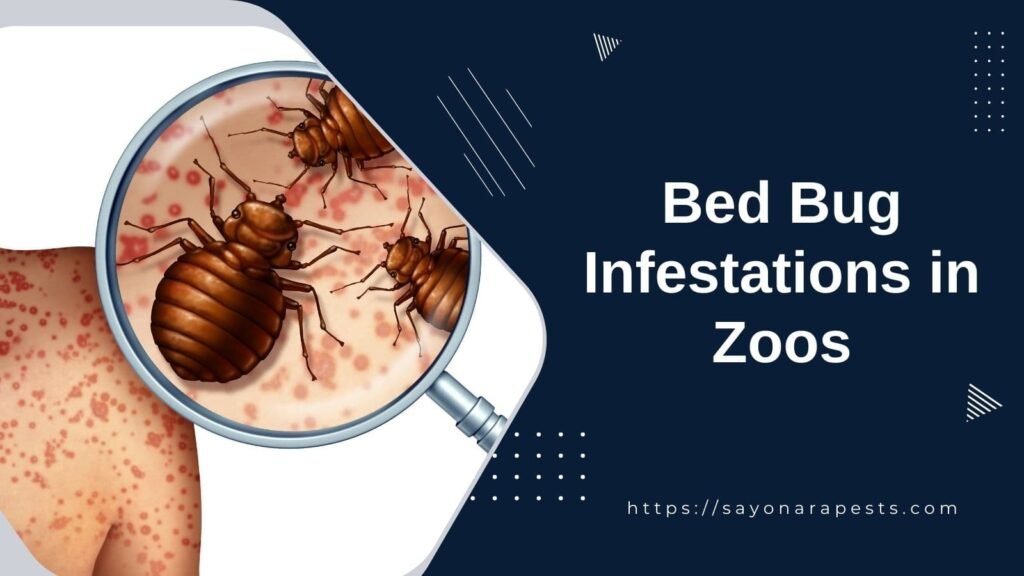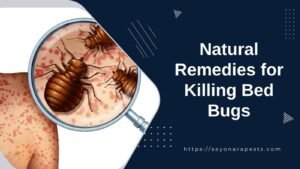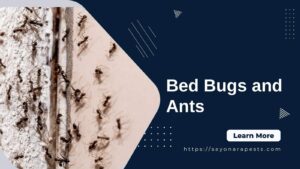Understanding Bed Bug Infestations
Recognizing and addressing bed bug infestations swiftly is crucial for homeowners, renters, hoteliers, and AirBNB hosts. These unwelcome guests not only cause discomfort but can also lead to significant financial and reputational damage.
Signs of Bed Bug Infestations
Bed bug infestations can often go unnoticed until they become severe. However, early detection is key to effective control. Signs of an active infestation include:
- Small, Rusty Spots: These spots on your mattress and bed linens are telltale signs, often a mixture of bed bug droppings and blood spots.
- Itchy Welts: Red, itchy welts on the skin are often a reaction to bed bug bites. They typically feed on any bare skin exposed while sleeping.
- Live Insects: Although bed bugs are elusive, you may spot live or dead bed bugs in the crevices of your mattress or furniture.
- Eggs and Eggshells: Tiny white eggs or eggshells may be found in mattress seams or other hidden areas.
- Foul Odor: A musty, unpleasant odor from the bugs’ scent glands may be noticeable in severe infestations.
For more detailed information on signs and symptoms, our article on bed bug myths and facts provides insights.
Inspection for Bed Bugs
A thorough inspection is vital to confirm the presence of bed bugs and to determine the extent of the infestation. Key areas to inspect include:
- Mattresses and Bed Frames: Examine the seams, folds, and tags of mattresses, as well as any crevices in the bed frame and headboard.
- Furniture: Look in and around sofas, chairs, dressers, and other furniture, especially if secondhand or recently moved.
- Household Fixtures: Check behind baseboards, electrical wall plates, picture frames, and wall hangings.
- Personal Belongings: Inspect luggage, clothing, and items brought into the home for signs of bed bugs, especially after traveling.
Bed bugs can hide in spaces as thin as a credit card, so it’s important to check even the smallest nooks and crannies. For tips on how to inspect for bed bugs effectively, including when staying in hotels, visit how to check for bed bugs in hotel rooms.
To learn about the methods for eliminating these pests, including killing bed bugs with heat and using diatomaceous earth to kill bed bugs, explore our comprehensive guides on ways to kill bed bugs.
Remember, early detection and swift action are essential in combating bed bug infestations, whether at home or in places as unexpected as zoos.
Prevention of Bed Bug Infestations
When it comes to bed bugs, prevention is highly preferable to the process of extermination. Implementing effective strategies can help prevent the introduction and spread of bed bugs in your environment.
Avoiding Infested Items
It’s crucial to be vigilant about items that come into your home. Bed bugs are expert hitchhikers, and they can easily find their way into your space through infested items.
- Be wary of secondhand furniture, mattresses, and clothing.
- Inspect any used or rented items thoroughly before bringing them inside.
- When purchasing secondhand items, look for any signs of bed bugs such as tiny dark spots or live insects.
According to SCPH, thoroughly inspecting any secondhand items is key to preventing a bed bug infestation. Pay particular attention to cracks, crevices, and folds where bed bugs like to hide.
Inspecting Luggage and Clothes
Traveling can significantly increase the risk of encountering bed bugs and inadvertently bringing them into your home. It’s important to take precautions:
- Always inspect your luggage and clothing after a trip before entering your home.
- Use luggage racks to keep your bags off the floor and away from potential infestation sites in hotels.
- Upon returning, launder all your clothing in hot water and dry them on a high heat setting to kill any bed bugs that may have come along for the ride.
For more detailed information on how to avoid bringing bed bugs home from your travels, check out our article on preventing bed bugs when traveling.
If you suspect an infestation has already occurred, visit our sections on using steam to kill bed bugs, using diatomaceous earth to kill bed bugs, or killing bed bugs with heat for effective treatment options.
Additionally, familiarizing yourself with how to check for bed bugs in hotel rooms can be an invaluable skill for any traveler.
Remember, maintaining a proactive stance and incorporating these preventive measures can greatly reduce the likelihood of a bed bug infestation, leaving your home safe and pest-free.
Effective Bed Bug Control Methods
To maintain a home or business free of bed bugs, it is essential to understand the various methods available for controlling and eradicating these pests.
Here, we’ll delve into two main approaches: Integrated Pest Management (IPM) and the use of chemical versus non-chemical controls.
Integrated Pest Management (IPM)
Integrated Pest Management (IPM) is a comprehensive approach to pest control that combines multiple strategies to manage pests effectively.
The goal of IPM is not just to eliminate pests, but also to do so in a way that minimizes risks to human health, beneficial organisms, and the environment.
In the context of bed bug infestations, IPM involves a combination of tactics such as trapping, baiting, and the use of repellents.
These methods are used in a strategic manner to control, reduce, or eliminate bed bug populations. According to NCBI Bookshelf, successful IPM programs in settings such as zoos employ these methods meticulously to ensure the safety of both the animals and visitors.
IPM also emphasizes the importance of monitoring and maintenance to prevent future infestations.
Ongoing inspection and detection measures are crucial in catching bed bug problems early on, which allows for more effective and less invasive control methods to be employed.
Chemical vs. Non-Chemical Controls
When it comes to bed bug eradication, there are two primary categories of control methods: chemical and non-chemical.
Chemical controls include the use of pesticides and insecticides, while non-chemical controls encompass physical methods such as heat treatment, steam, freezing, and diatomaceous earth.
| Control Method | Type | Description |
|---|---|---|
| Pesticides | Chemical | Insecticides designed to kill bed bugs on contact or through ingestion. |
| Heat Treatment | Non-Chemical | Involves raising the temperature of an infested area to a level that is lethal to bed bugs. |
| Steam | Non-Chemical | Uses high-temperature steam to kill bed bugs and their eggs on contact. |
| Freezing | Non-Chemical | Exposes bed bugs to extremely low temperatures to kill them. |
| Diatomaceous Earth | Non-Chemical | A powder that causes dehydration and death when bed bugs come into contact with it. |
Chemical methods may be necessary for severe infestations, but they should be considered a last resort due to toxicity concerns, particularly in sensitive environments like zoos (NCBI Bookshelf).
The tragic incident at the National Zoo, where red pandas died after ingesting aluminum phosphide, underscores the potential risks associated with the use of chemicals (NCBI Bookshelf).
Non-chemical methods are often preferred as they pose less risk to humans and animals.
Techniques such as killing bed bugs with heat, using steam, and freezing are effective alternatives that can eliminate bed bugs without leaving harmful residues.
Additionally, using diatomaceous earth can be an excellent way to control bed bug populations in a more natural and non-toxic manner.
When deciding on the best approach for bed bug control, it is essential to consider the specific circumstances of the infestation and the potential risks associated with each method.
Utilizing a combination of these strategies, as recommended in IPM, can lead to more effective and sustainable bed bug management.
For more information on bed bug extermination methods, explore effective bed bug extermination methods and best bed bug elimination techniques.
Risks and Challenges in Bed Bug Treatment
Addressing bed bug infestations requires a well-thought-out strategy that takes into account the health and safety of humans and animals, especially in sensitive environments like zoos.
This section outlines the hazards associated with various extermination methods and provides insights from case studies on successful treatments.
Toxicity Concerns
One of the primary challenges in treating bed bug infestations is the potential toxicity of chemical treatments. Chemicals, although effective for pest eradication, can pose significant health risks.
In zoos, the stakes are higher due to the close proximity of animals and the possibility of accidental ingestion. For instance, the National Zoo experienced a tragic incident where red pandas died after ingesting aluminum phosphide, a chemical used for rodent control within their enclosure.
To mitigate these risks, integrated pest management (IPM) strategies that prioritize non-chemical controls are recommended.
Physical trapping and biological controls can be effective alternatives. Moreover, when chemical controls are necessary, selecting products with lower toxicity and applying them with precision is crucial.
This necessitates professional expertise and often, a combination of chemical and non-chemical controls, such as heat treatment and freezing, to ensure safety and efficacy.
Case Studies in Bed Bug Treatment
Case studies offer valuable lessons on the successful management of bed bug infestations.
One such example is the use of Aprehend, a biopesticide that utilizes fungal spores to infect and kill bed bugs. In a case study, Aprehend was applied in a heavily infested group living facility with positive results.
The success of the treatment was attributed to Aprehend’s ability to reach previously inaccessible harborages, minimal preparation required for treatment, and a residual protection period of up to 90 days against re-infestations.
The efficacy was confirmed using the Ziploc Bag Test, which demonstrated sporulation (white fuzz) in a sealed environment, indicating the presence of Aprehend (Aprehend).
The challenges of bed bug eradication are not limited to zoos. These pests are notoriously difficult to eliminate, often requiring extreme sanitization or professional pest control services.
Many homeowners find themselves discarding mattresses, furniture, and personal belongings to fully rid their living spaces of bed bugs. Additionally, bed bugs can inhabit pet beds, as they are not exclusive to human hosts.
As the case studies suggest, successful bed bug treatment requires careful consideration of the methods and products used.
It emphasizes the importance of ongoing vigilance and the implementation of preventive measures, such as inspecting luggage and clothes after travel and checking hotel rooms to avert infestations.
Homeowners, zookeepers, and hospitality professionals must stay informed on effective bed bug extermination methods and the risks associated with various treatments to maintain a safe and pest-free environment.
Success Stories in Bed Bug Eradication
The battle against bed bugs can often feel like a never-ending war, but success stories offer hope and insight into effective eradication methods.
One such story revolves around the innovative use of Aprehend® in a heavily infested facility.
Aprehend Treatment Case Study
A case study published by Aprehend highlights a groundbreaking approach to tackle an extreme bed bug infestation in a group-living facility.
This facility, which was home to intellectually disabled men, proved to be a challenging environment for bed bug eradication due to its complex structure, including double drop ceilings and a mix of different flooring types.
The treatment plan was distinctive in that it relied solely on Aprehend®, aside from the use of mattress encasements.
The preparation phase was critical, with staff decluttering rooms, removing baseboards in areas with severe infestations, and instituting a stringent hygiene policy. This prep work was complemented by frequent laundering of clothing and bedding.
Impact of Aprehend Treatment
The Aprehend® treatment covered a comprehensive list of areas throughout the facility, which included, but was not limited to, bed frames, box springs, and common room furniture.
The application of the treatment saw the use of 64 ounces of Aprehend®, evenly distributed across the various surfaces that required attention.
| Treatment Area | Aprehend® Used |
|---|---|
| Bedrooms (20) and Mattresses (24) | Encased |
| Common Rooms and Furniture | Yes |
| Hallways and Stairwells | Perimeter Treatment |
The results were nothing short of remarkable. Within just two weeks, a significant die-off of bed bugs was observed.
By the 60th day, a 90% reduction in the bed bug population was recorded, and by the end of the 90-day residual period, the infestation was virtually eliminated, with less than a dozen bed bugs detected.
The efficacy of Aprehend® is attributed to its ability to reach previously inaccessible harborages and its extended residual effect, which protects against re-infestation for up to three months.
The facility opted to continue with a quarterly treatment plan, coupled with monthly monitoring to ensure the continued success of the eradication efforts.
Understanding the success of Aprehend® and its impact on bed bug control can inspire confidence in those seeking solutions for their own infestations.
For more information on professional bed bug treatment options and effective bed bug extermination methods, explore our comprehensive guides.
Additionally, for those interested in preventative measures, our articles on preventing bed bugs when traveling and how to check for bed bugs in hotel rooms offer valuable tips for keeping these pests at bay.
Bed Bug Infestations Beyond Homes
While most discussions about bed bug control focus on residential settings, these pests pose challenges in a variety of public spaces, including zoos.
Understanding how bed bugs can impact these environments and what implications they carry for travelers is essential for comprehensive pest management.
Bed Bugs in Zoos
Zoos are complex environments that require careful pest management strategies to protect the health of animals, visitors, and staff.
Bed bug infestations in zoos, although less commonly discussed, can occur and present unique challenges.
Sanitation, proper storage and removal of solid waste (bedding, feed, enrichment items, dirt, and debris), and appropriate food storage are critical steps in pest control within zoological spaces.
Physical barriers such as fencing, netting, and roofing act as a first line of defense.
However, these may not be as effective against bed bugs due to their ability to hitchhike on personal items and their small size.
In zoos, Integrated Pest Management (IPM) strategies are crucial. This approach includes trapping, baiting, repellents, and other methods to control, reduce, or eliminate pests.
Chemical treatments are used as a last resort due to toxicity concerns, especially considering the sensitive nature of zoo inhabitants. A tragic incident at the National Zoo, where red pandas perished after ingesting aluminum phosphide used for rodent control, underscores the importance of using pest control methods that are safe for all zoo residents.
For a closer look at the methods that can be safely employed, explore effective bed bug extermination methods and non-chemical controls like steam and heat treatment.
Implications for Travelers
For travelers visiting zoos or other animal exhibits, bed bug infestations have implications for both their experience and the potential spread of these pests.
Visitors should be vigilant about their personal items, as bed bugs can easily hitch a ride on luggage, clothing, and other belongings. It’s crucial to learn about preventing bed bugs when traveling and to be aware of how to perform inspections, such as how to check for bed bugs in hotel rooms.
Travelers must also recognize their role in preventing the spread of bed bugs to other environments, including their own homes.
After visiting a zoo or any public space, it’s wise to examine personal belongings and to wash and dry clothing on high heat to kill any potential hitchhikers.
For those concerned about bringing pests home, familiarizing oneself with ways to kill bed bugs and natural remedies for killing bed bugs can be beneficial.
By staying informed and taking preventive measures, both zoos and visitors can work together to reduce the risk of bed bug infestations and ensure a safe and enjoyable experience for all.




